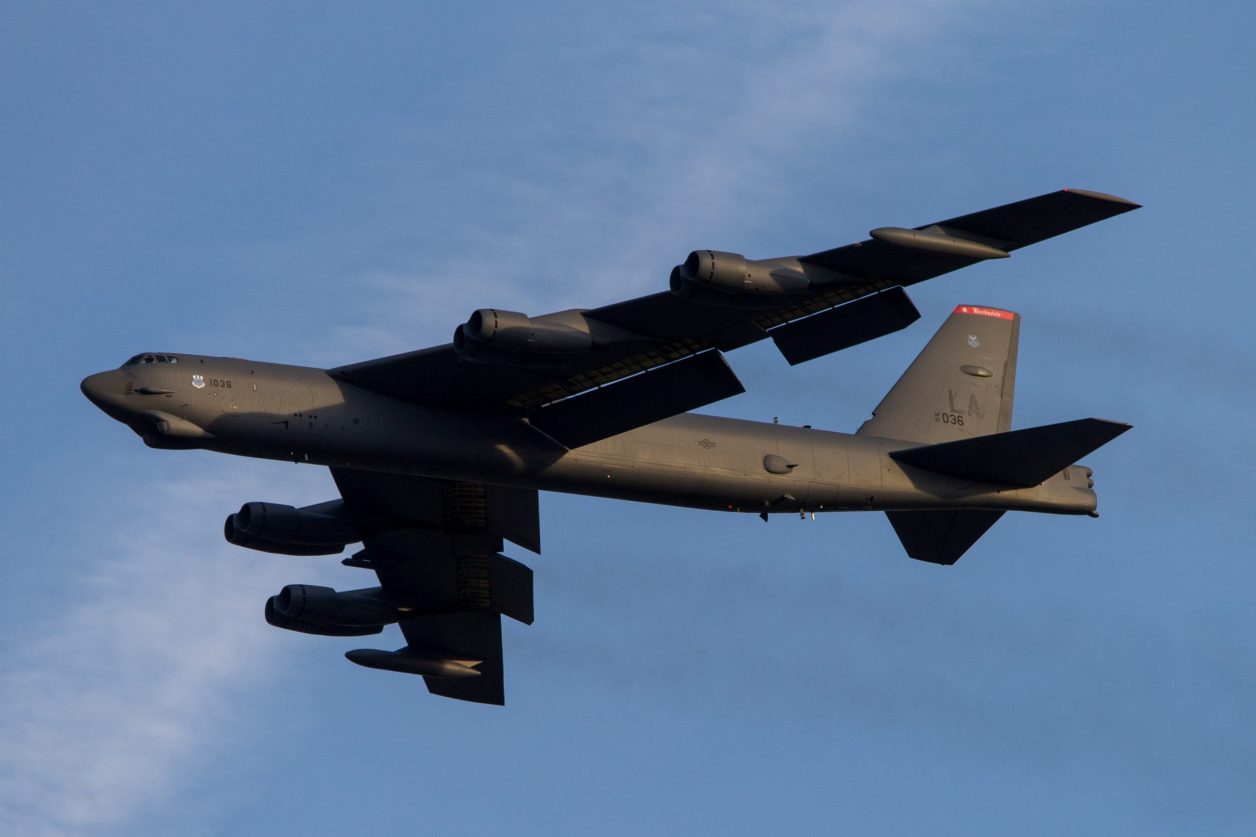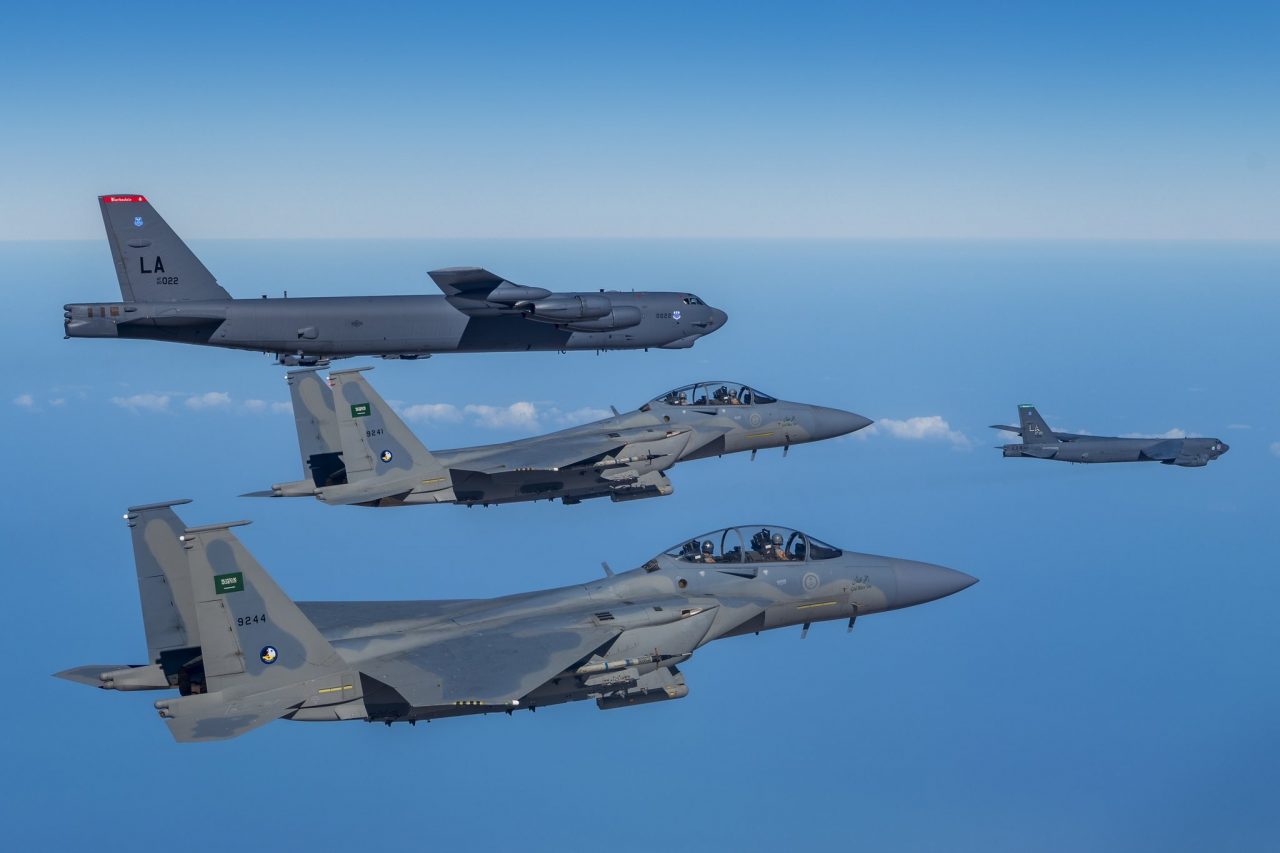In what could further revolutionize air warfare, the US Air Force (USAF) has moved one step closer to equipping B-52 bombers with a new beyond-line-of-sight communication (BLOS) capability called IRIS.
If everything goes well, the IRIS system will replace the Global Iridium Bomber Set (GLIBS), which has been in service since 2017.
The IRIS is an Air Force Global Strike Command’s (AFGSC) solution for integrating the B-52 fleet into the greater Joint All-Domain Command and Control problem set.
The USAF has just completed the first aerial demonstration of IRIS. This test was executed by the 49th Test and Evaluation Squadron (TES) on a B-52 Stratofortress at Barksdale Air Force Base (AFB) on 22 June.
While the bomber crew took to the skies, a combat operations team from the 608th Air Operations Center (AOC) provided command and control (C2) functions. The team also analyzed the voice and data transfer capabilities observed from the B-52 aircraft for the transmission of real-time images and videos.
The AOC team also acknowledged the method of “how” the service acquires a new capability plays a significant role in the timeline of fielding the new capability.
The IRIS system provides complete global coverage by leveraging the Low Earth Orbit (LEO) Iridium NEXT satellite constellation. Additionally, IRIS will forgo using the dated 2.4 Kbps bandwidth capacity of Iridium for the much-improved L-Band speeds of Iridium Certus.
This broadband service has a bandwidth capacity of up to 704 Kbps, it is said.
“In a wartime scenario, the single point of failure often lies in our ability to communicate,” said Capt. Richard Brown, 49th TES Conventional test flight commander.
“If we can’t send and receive mission-critical data from our aircraft reliably and efficiently, then we will lose. The IRIS system is one of the many data-link solutions that we need in order to equip the warfighter for today’s fight.”

Lt. Col. Paul Goossen, 608th AOC Combat Operations Division chief, said, “Today, we learned that the IRIS System can be immediately employed using current joint tactics for operational and tactical control of long-range strike aircraft”.
According to Chris Morales, 608th AOC Combat Operations Division deputy chief, “We found that the AFWERX SBIR’s program works to find rapid prototype solutions through commercially available means. Sometimes the solutions to global problems can be found in your local community from small vendors.”
It may be noted that AFGSC has leveraged an AFWERX Small Business Innovation Research Phase II contract to gauge the feasibility of tying a commercial, off-the-shelf Outerlink Global Solutions system into the B-52 global satellite architecture to enable unimpeded coverage.
The SBIR program engages small businesses with federal research and development.
Following the success of the test event, AFGSC has said that it will continue working through the AFWERX process to attain an SBIR Strategic Finance contract to support IRIS. This will allow for permanent bomber integration and seamless coordination across geographic air operation centers using the system.
Incidentally, AFGSC’s solutions to integrate the B-52 fleet into the greater Joint All-Domain Command and Control problem set is a part of the BLOS communication system. IRIS is one of many programs on the horizon responsible for the B-52 paradigm shift from a legacy sustainment platform to a lethally modernized multi-domain aircraft.
These programs, it is said, were necessitated following the experience in past wars. In most of them, aircrews were sent up without pre-planned targets so they could respond to the fleeting targets that emerged during the battle.
On some of these missions, the job of finding targets and compiling information to attack them was done by people distributed all over the globe. With a GPS-guided munition, the aircrew’s job became one of delivering the munitions based on information provided by someone else.
With new sensors on the aircraft, the job of the aircrew was sometimes to collect information for someone else’s attack sequence. However, in many cases, the aircrew still needs to perform the whole sequence, so it cannot be simply reprogrammed to perform a different role.
The result is an increase in the number and complexity of ways to accomplish the emerging target mission.
The fact that this distribution increases the potential for people to find alternative ways to exploit opportunities makes it a blessing or a curse. Depending on the type of war, a commander may want the aircrew to use this “latent potential” to go find new opportunities and exploit them, or the commander may want the aircrew to follow strict orders.
The trouble with the second situation is that it depends too much on the ability of humans to monitor compliance.

Saudi Arabia’s airspace on Dec. 10. 2020. (via Twitter)
The IRIS system, it is believed, will solve these issues with the communication between the crew in the air and the commander on the ground. Incidentally, the IRIS system is being promoted in Europe for the civilian air sector
At present, pilots mostly communicate with air traffic controllers by voice or by using what is said to be outdated data communication technology. This makes flight operations “inefficient”, as planes have to be kept far apart from one another and follow predefined air corridors instead of taking the most direct route.
Data exchanges through the Iris system use satellites to relay data digitally from the cockpit to the ground, increasing communication capacity and coverage, including remote and oceanic areas.
This means that flight plans can be continually updated during the flight to maintain an optimal trajectory towards the destination, minimizing the fuel burned and the carbon dioxide emitted.
Iris is backed by a consortium of 16 European partners, including the European Satellite Services Provider (ESSP), which is leading the certification effort. The ESSP was founded by seven national air traffic control organizations from France, Germany, Italy, Portugal, Spain, Switzerland and the UK.
Iris has been fully validated within Europe and is due to become operational on commercial flights across Europe at the start of 2023.
- Contact the author at nytten@gmail.com
- Follow EurAsian Times on Google News




